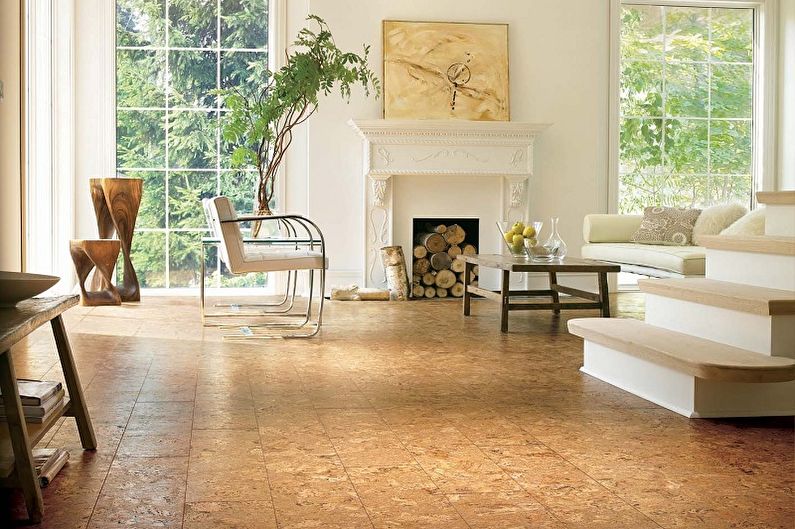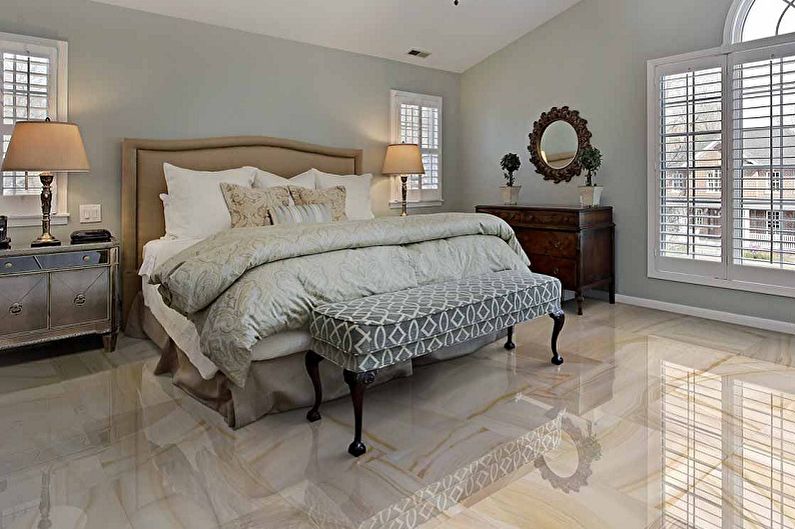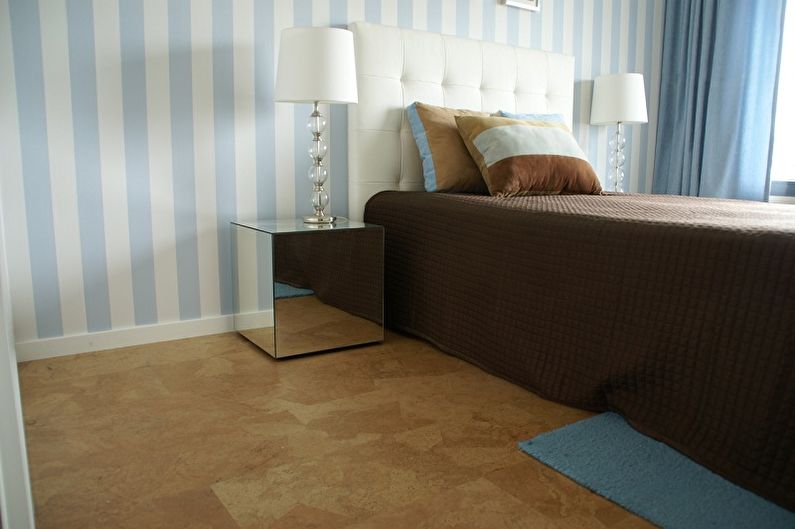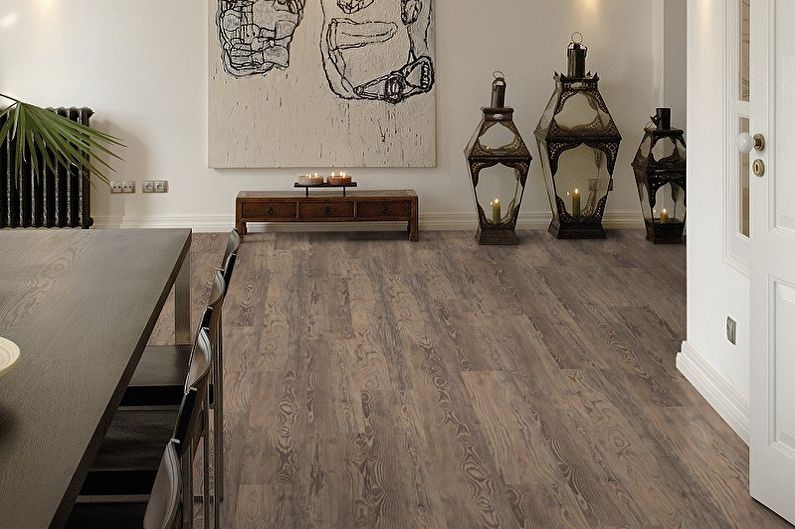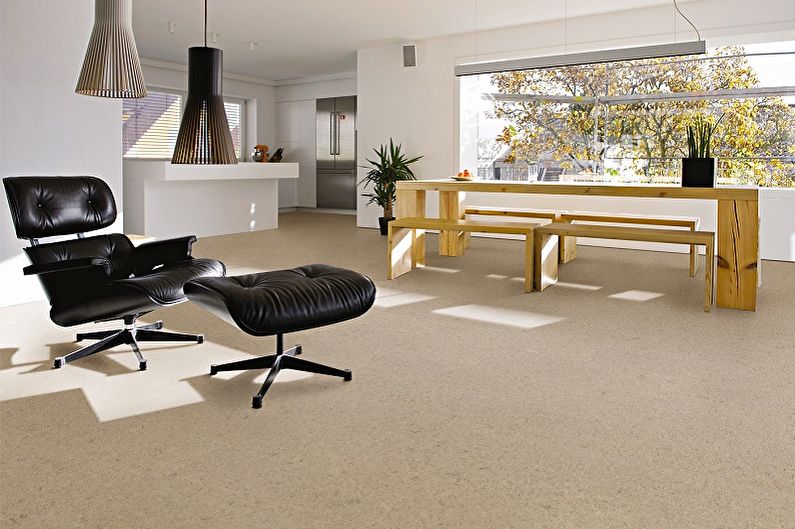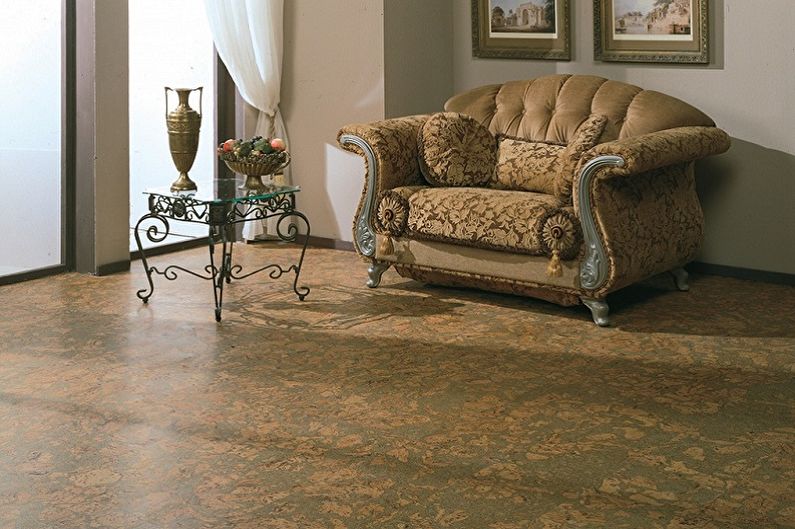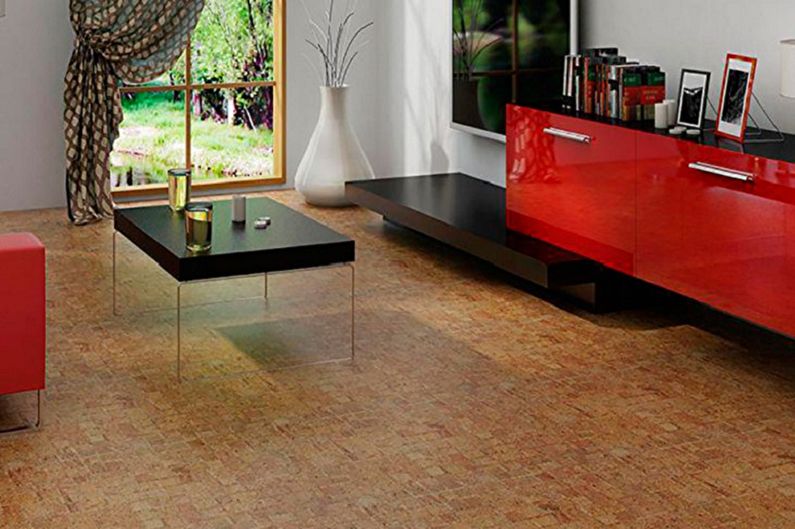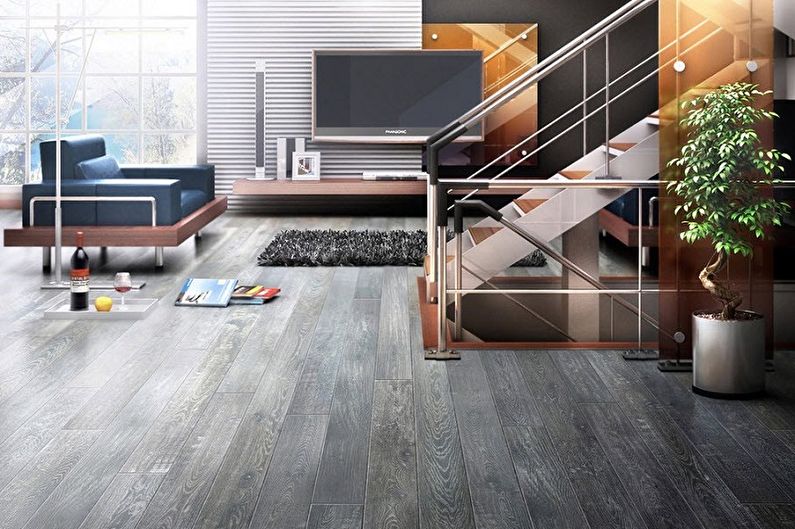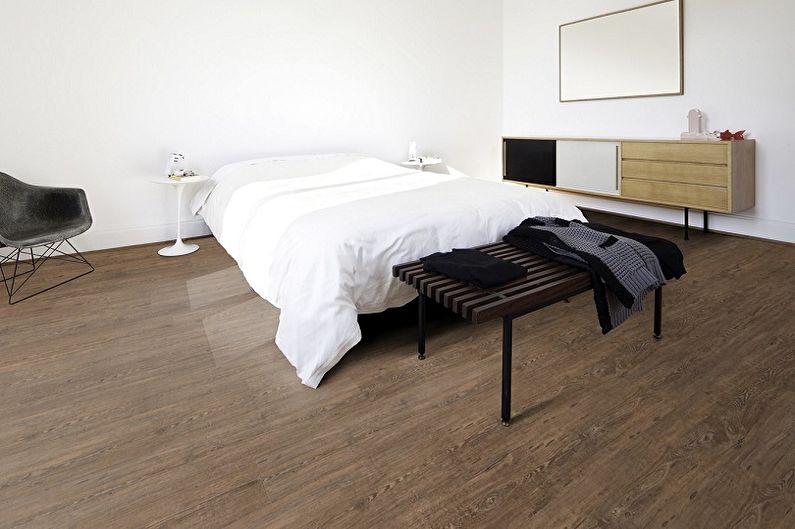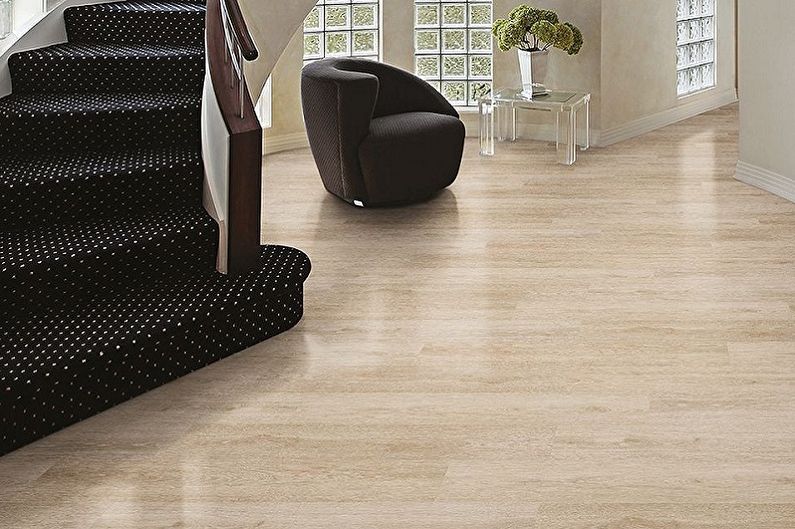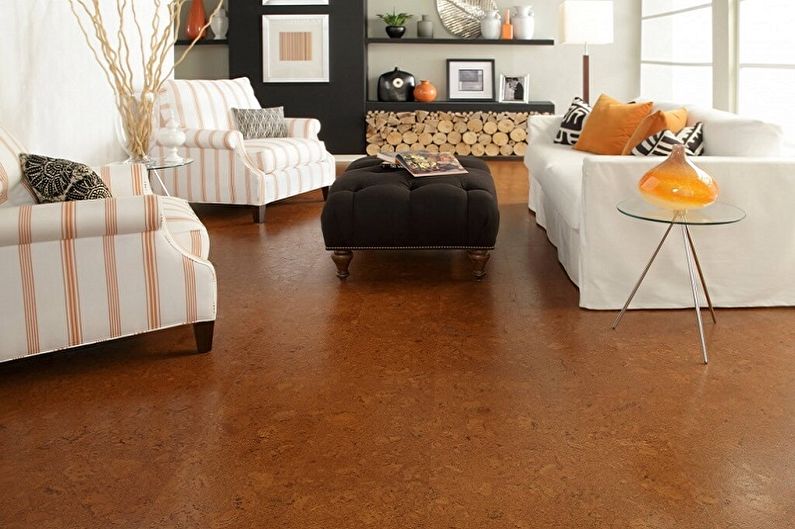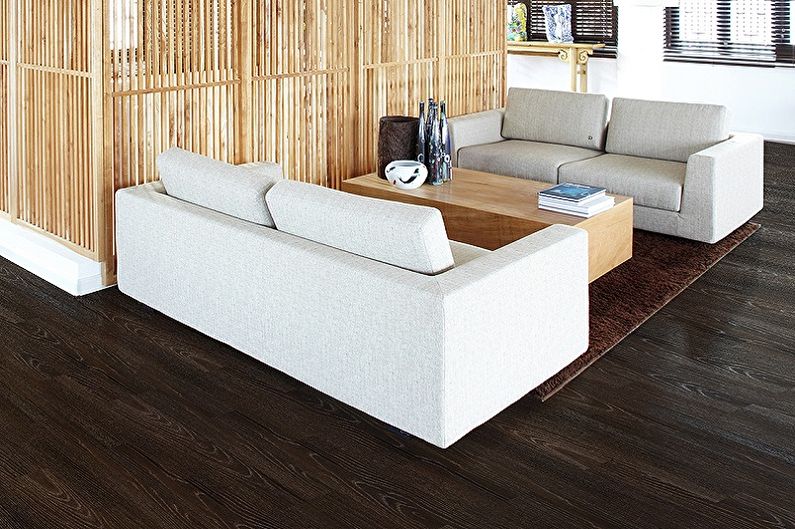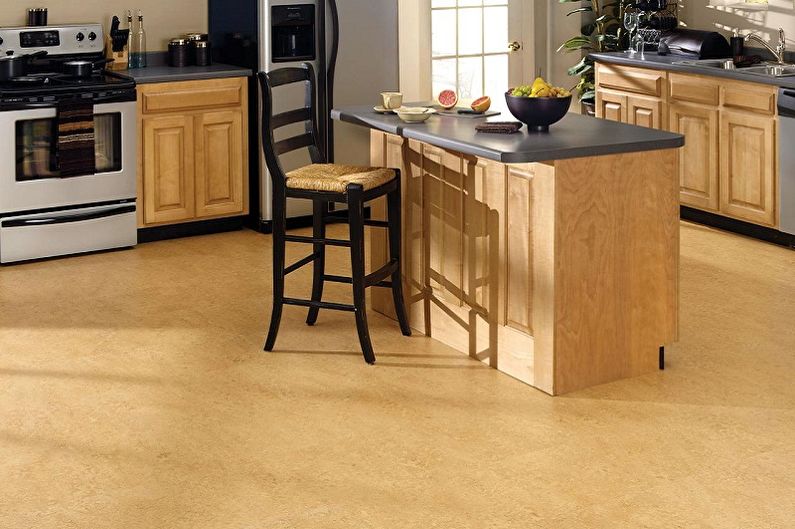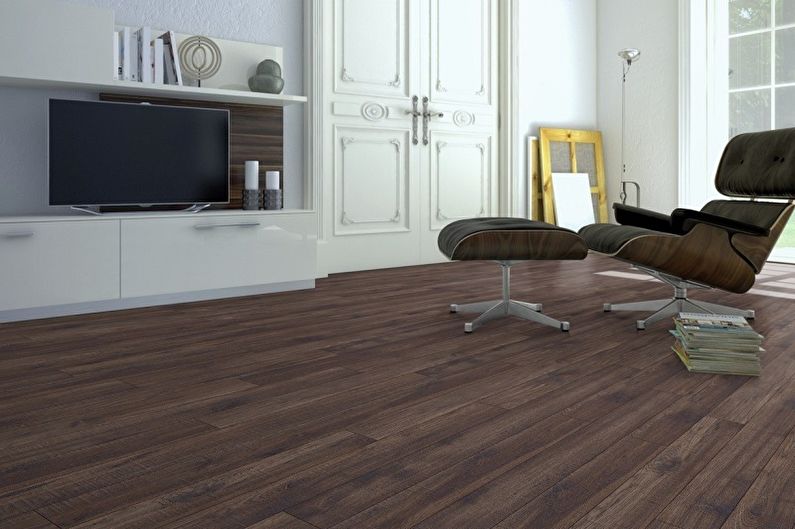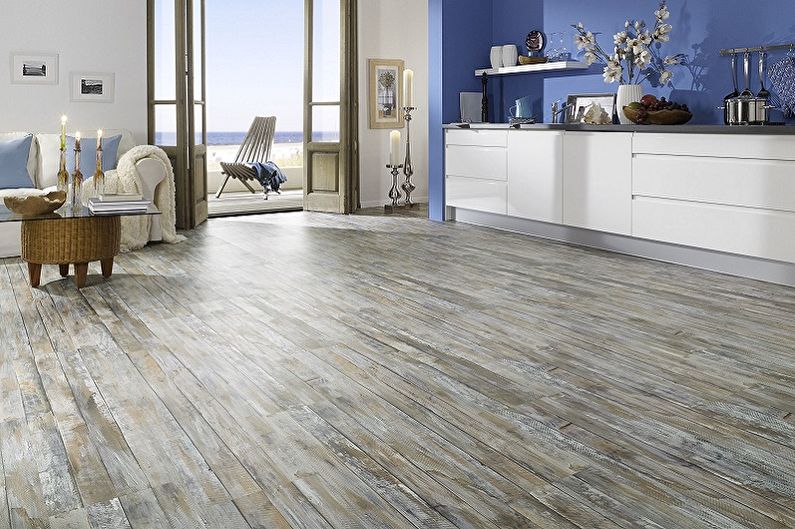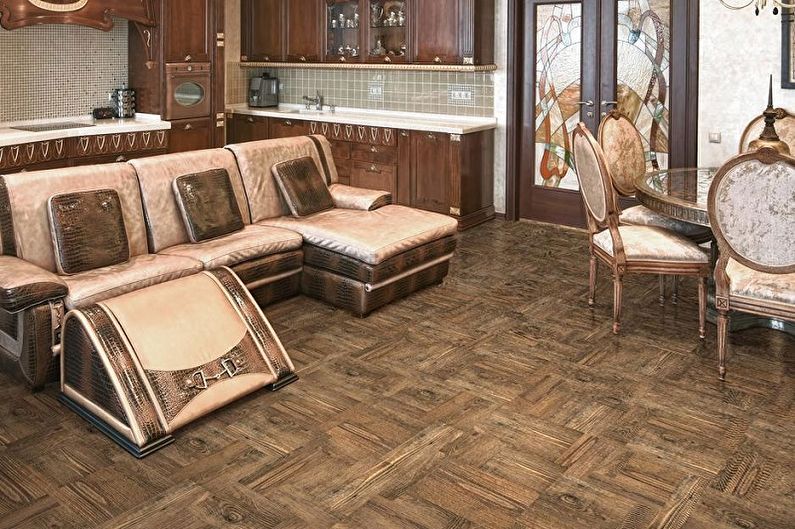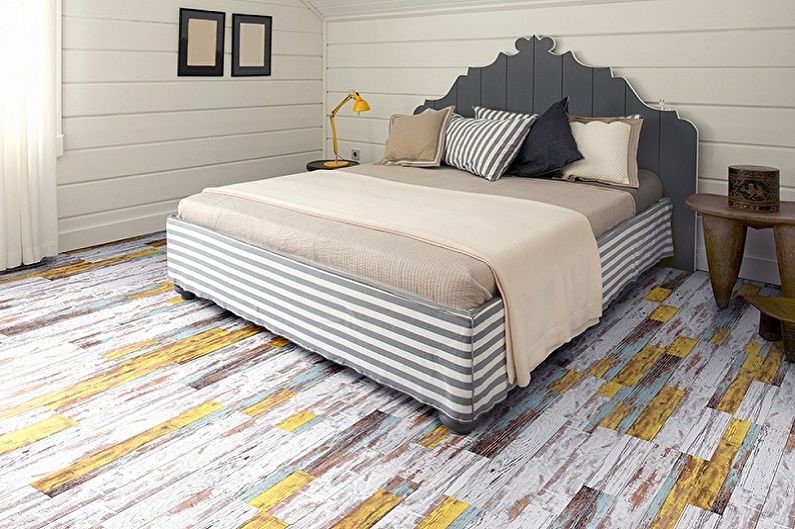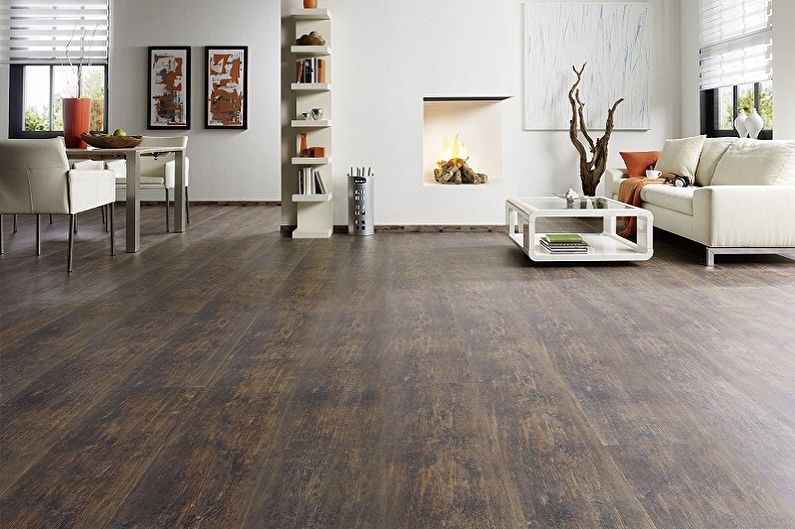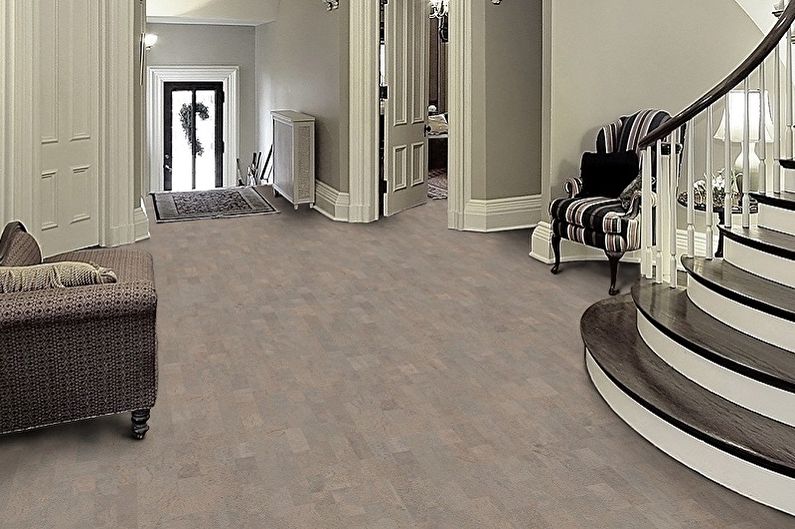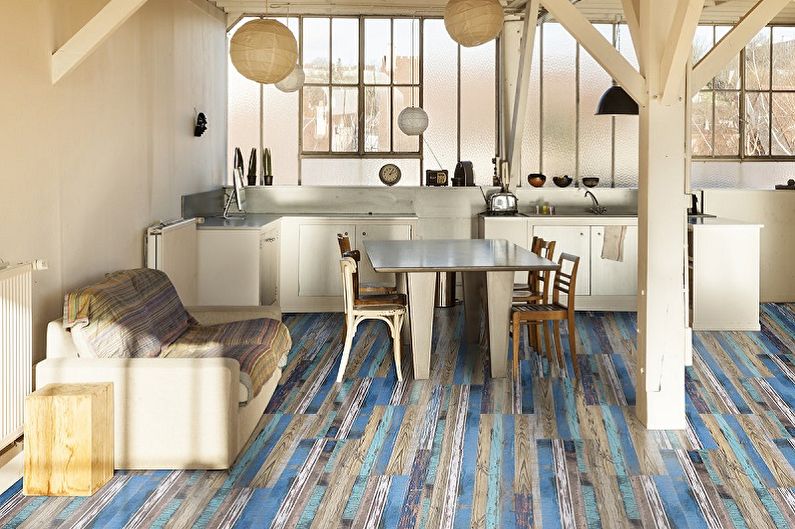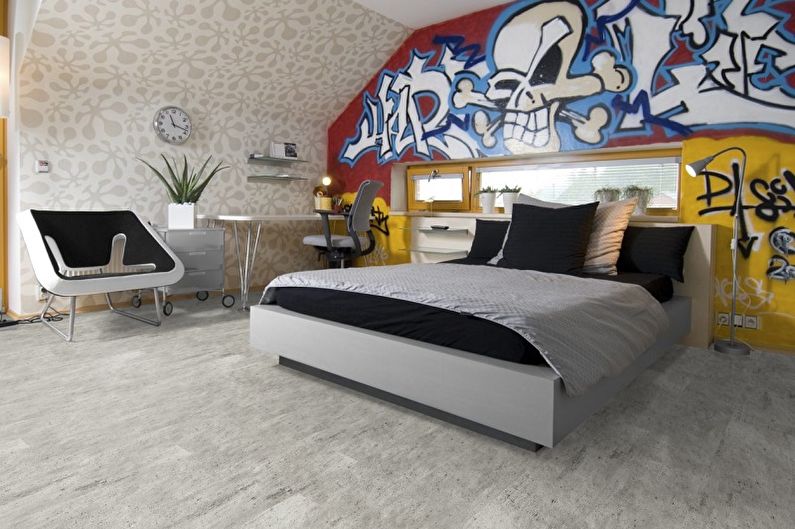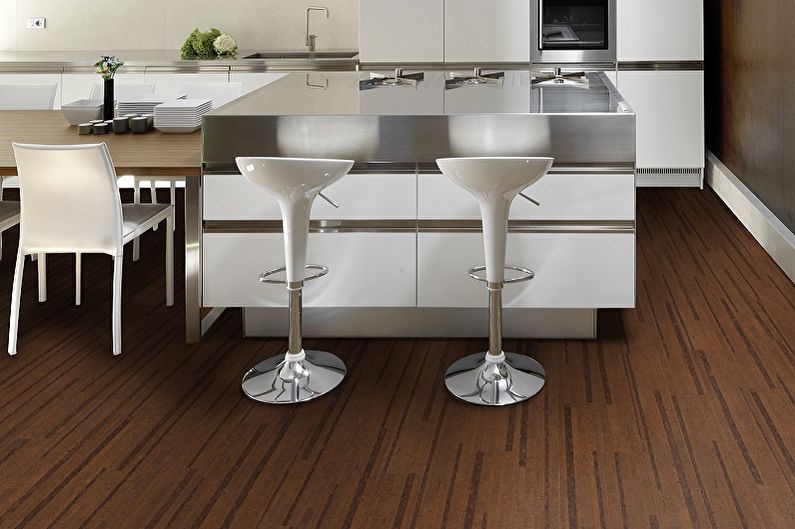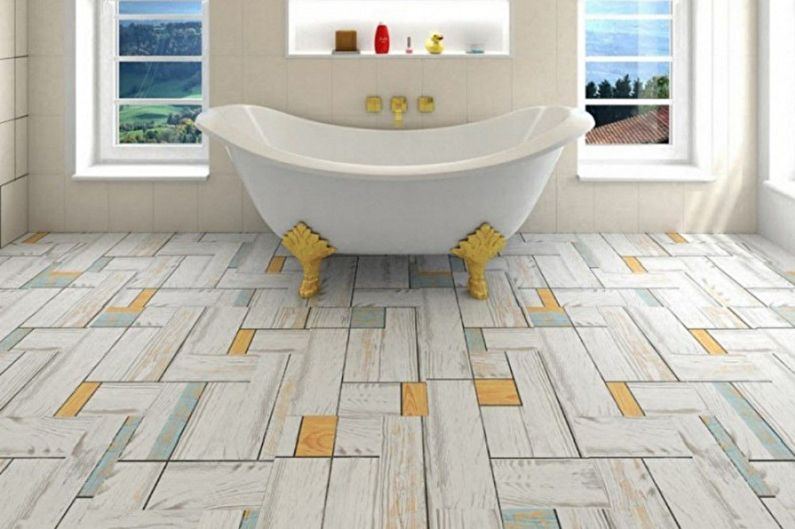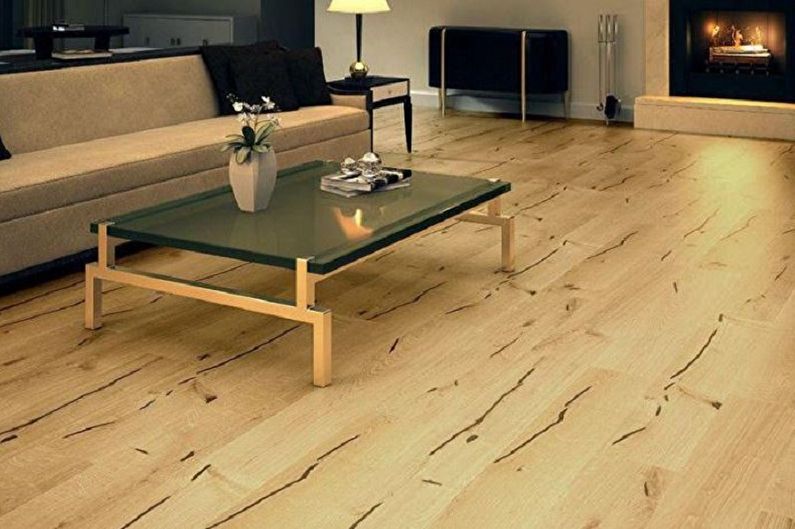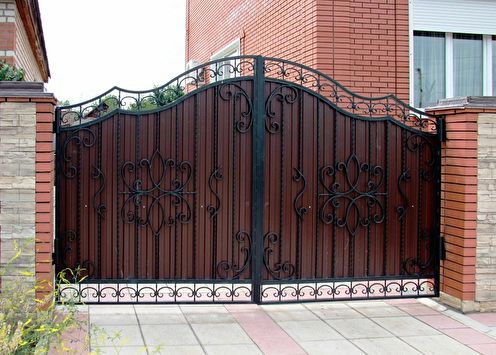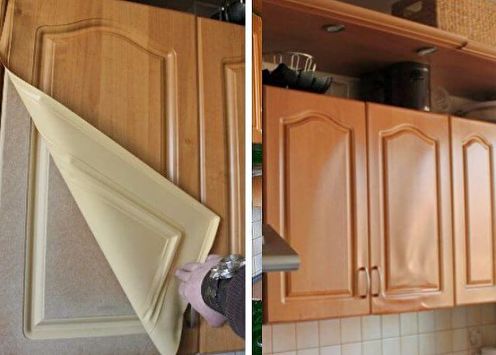
Cork appeared in the list of floor coverings quite recently, because of which this material is not yet very popular. Nevertheless, one cannot ignore the many advantages of such a finish. Maximum environmental friendliness, excellent heat and sound insulation, strength and resilience make cork flooring an ideal option for children's rooms, bedrooms, living rooms. Some of its varieties can be exploited in such rooms as a bathroom, kitchen, hallway. The aesthetics of modern cork coverings will satisfy the most demanding tastes and perfectly complement the interior decoration of any home.
Pros and cons of cork flooring
Comparing the bark of cork oak with ordinary wood, one should note its porous, spongy structure, which determines many of the physical characteristics of this material. Granules that are crushed and pressed together are often used as raw materials, and veneer cut with a thin layer serves for decorative purposes. The natural features of cork positively affect the microclimate in the room, making it warmer and more comfortable for life. The benefits of this coating include:
Environmental friendliness. The natural composition of the cork floor makes it one of the safest types of finishes, comparable only to parquet or solid wood boards. For the manufacture of technical (construction) cork, crumbs are used, but the binder in it is not synthetic glue (as, for example, in chipboard), but the natural substance suberin contained in the cortex. The sheets are pressed under the influence of high temperature and steam, after which they are cut into blocks of the required size and used as intended.
Heat. The uniqueness of the cork lies in its structure - under a microscope, in one cubic centimeter, you can count up to 40 million cells, similar to bulk bee honeycombs. Each cell has 14 faces, and the void inside is filled with air. This structure makes the cork the warmest, lightest and at the same time durable material. It does not allow the cold coming from the lower layers of the floor, and keeps the conditions pleasant for people in the room.
Soundproofing. The porous texture gives the cork one more significant advantage - the ability to absorb any sounds. While walking on this floor, the steps will be as quiet as possible - no squeaks or knocks that sometimes annoy the neighbors and wake up small children. At the same time, noise reduction works in both directions, which is especially important in multi-storey buildings.
Convenience. Another significant plus is the orthopedic effect of cork. The springy material dampens movement, reducing stress on the spine and feet. If glassware, ceramics, mobile phones and other valuables fall on such a floor, they are likely to remain safe and sound. Also, the elasticity of the cork helps to avoid injuries in babies who are just learning to walk on their own.
Hypoallergenicity. Unlike laminate, plastic, carpet, cork does not accumulate electrostatic voltage at all, and therefore does not attract dust. Even when heated, the material remains neutral, without evaporating any odors or harmful substances.
Resistance to mold, fungi, pests. There is hardly any other organic material in the world that, in terms of microbiological stability, could be compared with cork oak bark. No wonder it is from her that the plugs for the most expensive wines are cut, which in this form can be stored for more than one century.The antiseptic properties of cork allow you to forget about rotting and mold, which sometimes occurs in excessively humid rooms and quickly affects the usual wood floor. In addition, this coating is completely not afraid of insects and rodents.
Moisture resistant. The smallest air bubbles inside the cork and the membrane surface of the cells so well protect the material from water penetration that it is even used in the construction of swimming vehicles - boats, yachts and ships. In domestic conditions, roll cork floors glued to special rubber glue have the best waterproofness, since they do not have a wood component and they have a minimum of joints in which moisture could accumulate.
The disadvantages of cork flooring include a rather high price per square meter, as well as susceptibility to mechanical abrasion, punctures and scratches. Sharp stiletto heels, metal furniture legs, and pet claws can damage this coating. To protect against negative influences, the floor of the cork is usually covered with several layers of varnish, but in this case, some advantages of the natural material are lost.
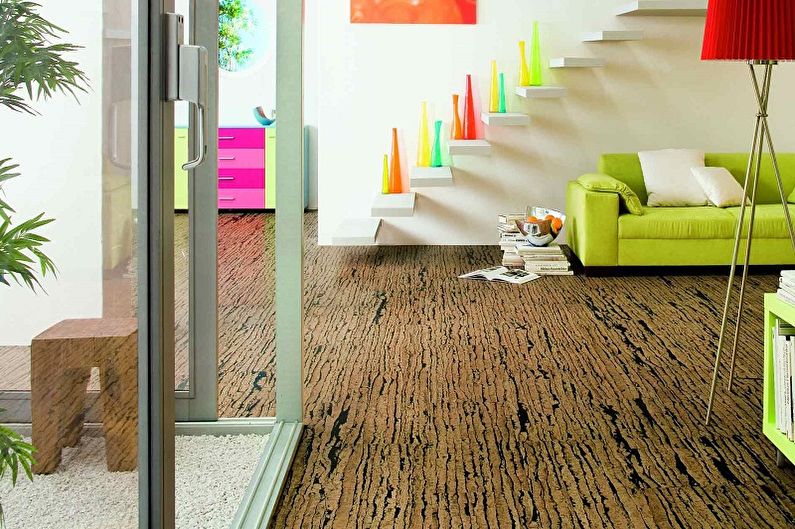
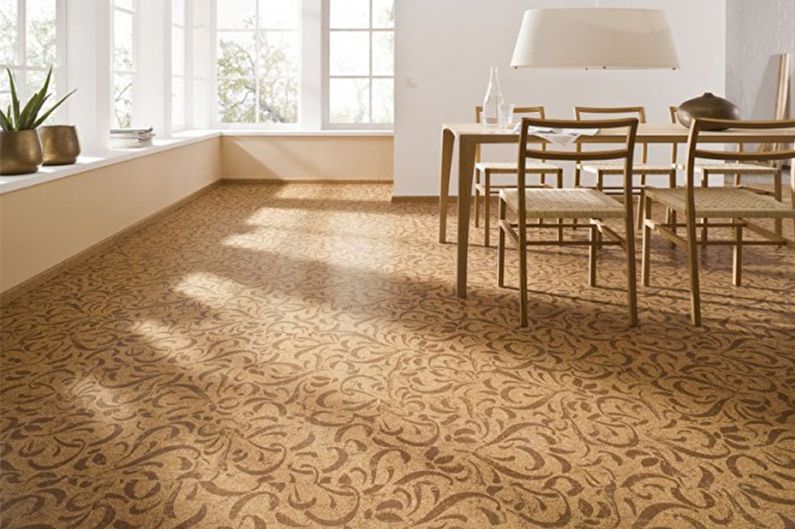

Types of cork coatings
Depending on the type of installation, the cork floor is divided into two categories: adhesive, which is simply glued to the prepared smooth surface, and castle (floating), which is laid like a laminate according to the tenon-groove principle. Each of them has its pros and cons, as well as its own scope.
Glue cork flooring is an ordinary layer of pressed cork, on top of which, for greater decorativeness, wood veneer or photo printing can be applied. It is available both in rolls and as individual elements of a rectangular or square shape. This coating is laid on top of a perfectly even, dry and clean concrete base, self-hardening polymers, plywood.
For bonding, water-based glue, rubber or synthetic resins can be used. It is best to choose a composition with natural rubber - it is more expensive, but it does not leak moisture and does not pollute the air with toxic fumes. Water-based glue is suitable only for dry rooms. Cut boards are sometimes sold with an already applied adhesive layer, and to glue them, just remove the protective film.
The castle / floating cork floor consists of a solid base - sheets of plywood, fiberboard, hydroplate (waterproof mixture of PVC and quartz), on top of which a cork, decorated with veneer or photo printing and coated with a protective varnish, is glued. The outer decorative layer can have any texture - imitating wood, stone, concrete, with any kind of drawings or prints. In this case, the colored patterns are not glued to the PVC film, but are applied directly to the cork, previously painted in the desired background color (usually white).
A floating floor is mounted in the same way as a laminate or parquet - the elements are joined end-to-end with the help of perfectly fitted spike-groove mounts cut in the solid base of the plates. To enhance heat and sound insulation, as well as additional alignment from below, a layer of a roll cork or other substrate is sometimes laid on the bottom, but, as a rule, without glue.
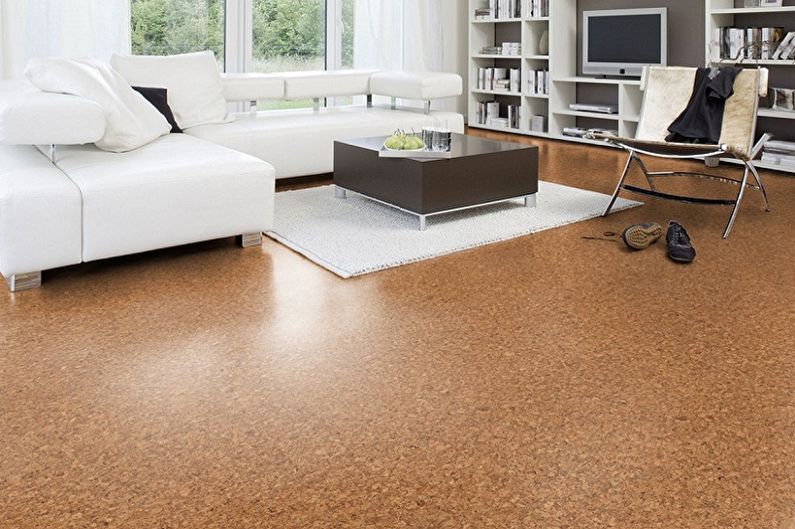
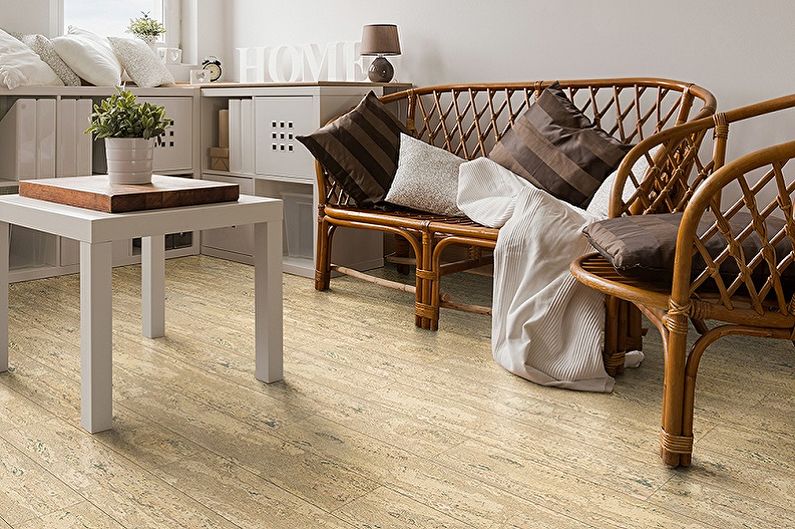
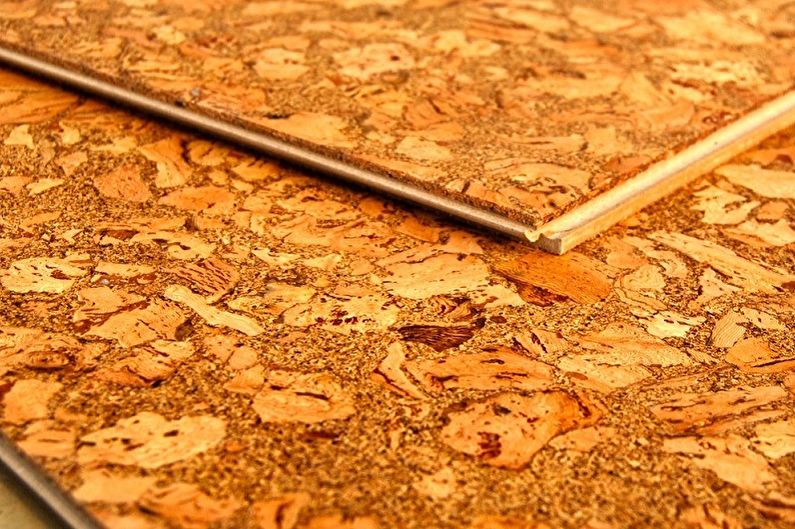
Cork floor in the interior
Given all the above advantages, cork can be a very worthy option when choosing floor finishes for any room. If someone does not like the fine-grained surface in natural beige and brown tones, you can always choose veneered or printed products. In appearance, such a floor cannot be distinguished from real parquet, but at the same time it retains the useful qualities of cork material.
Cork floor in a children's room
It is difficult to find a better type of cover for a child’s room than a cork. Quiet, warm, resilient, environmentally friendly, non-allergenic, easy to clean, this floor is the best solution when decorating a nursery.It will provide the kids with maximum comfort during games and will make their movements much safer, significantly mitigating the blows from falls. At the same time, the soundproofing properties of the cork will protect the sensitive sleep of infants and reduce the irritation of neighbors from below, complaining of the stomping or running around of growing children.
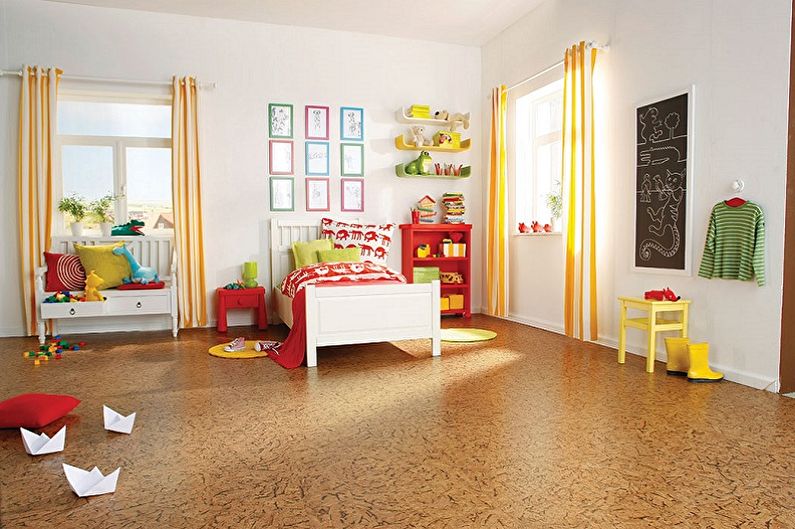
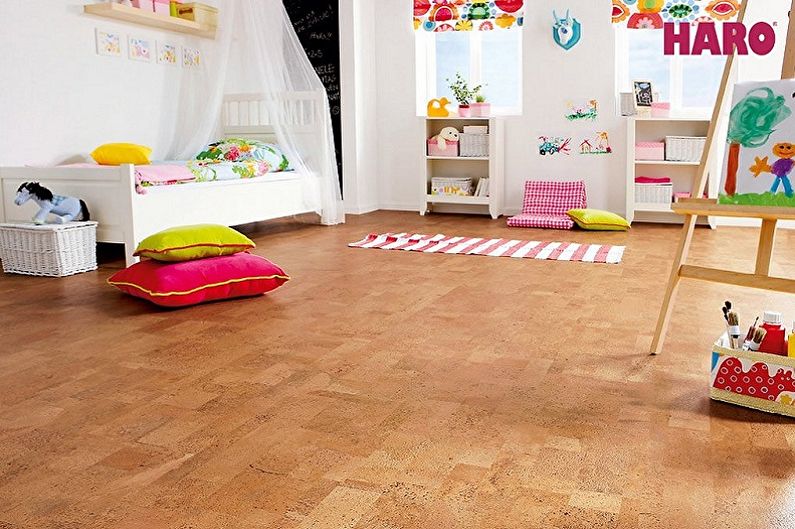
Cork flooring in the bedroom
In the sleeping room, cork flooring always creates additional comfort. Besides the fact that its warm natural texture pacifies and soothes, it is pleasant to walk barefoot on such a floor. The steps along it are completely inaudible, so if someone needs to get up at night or early in the morning, the other person’s sleep will not be disturbed by the creak of the floorboards. Also, unlike other types of finishes, the cork does not accumulate dust, while maintaining a healthy microclimate in the room.
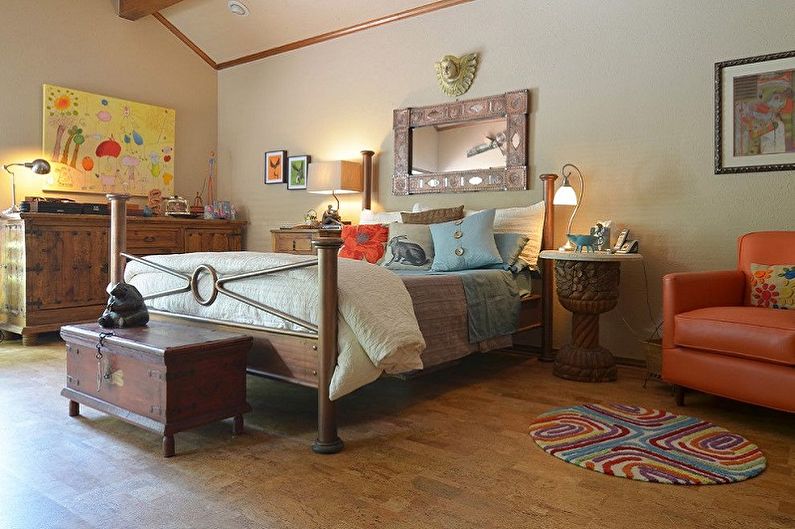
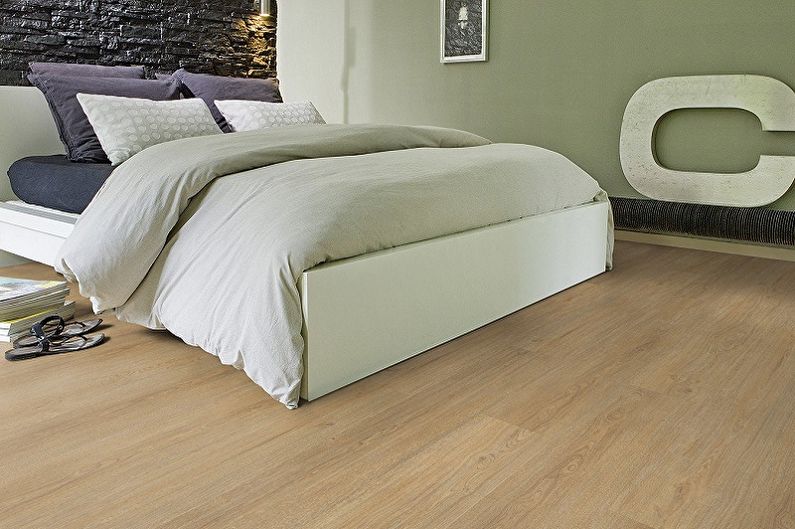
Cork floor in the living room
The natural texture of the cork will harmoniously fit into the Mediterranean, African, tropical design of the hall. They can also be interestingly complemented by modern minimalism or loft. For a classic design, a cork floor veneered with wood, or with photo printing in neutral colors, is more suitable.
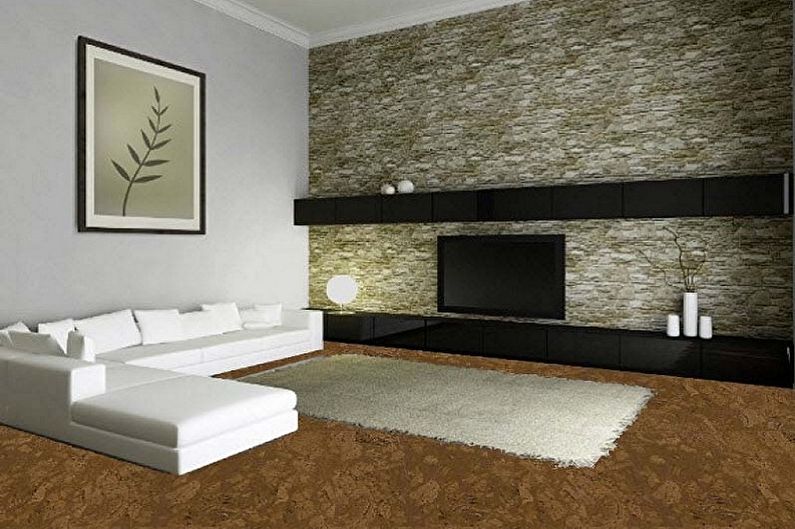
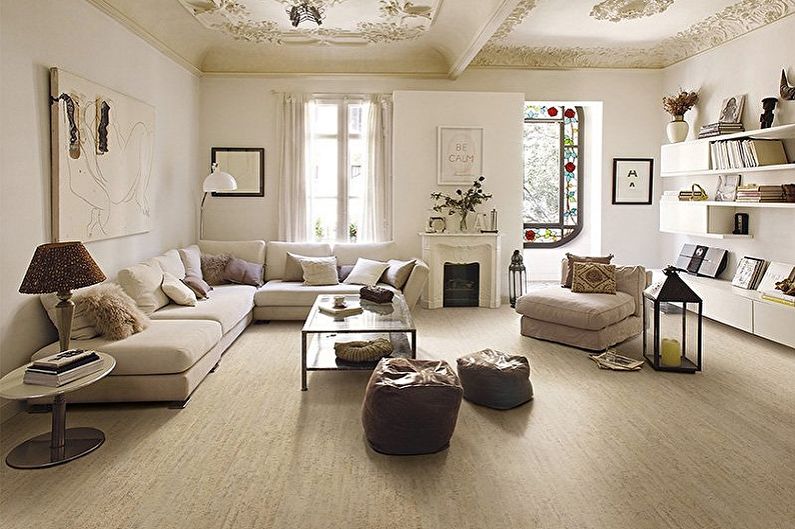
Cork floor in the kitchen
For the kitchen, it is advisable to choose a glue-type water-repellent cork floor or a lock on the base of a hydraulic plate. By texture, it can be ordinary grained, with a la ceramic pattern, imitation stone, natural planks, etc. The cork in this room is often used as an alternative to a warm floor, because it is warm in itself and does not require additional heating costs. Another nice quality is that the dishes falling on such an elastic surface will most likely remain intact.


Cork floor in the hallway
A cork finish creates a soft, unobtrusive ambience in the hallway. She softens the steps, setting the threshold for a quiet, homely mood. But, in order to avoid mechanical abrasion and damage by heels, in this area of the apartment it is recommended to cover the cork with a protective varnish in several layers.
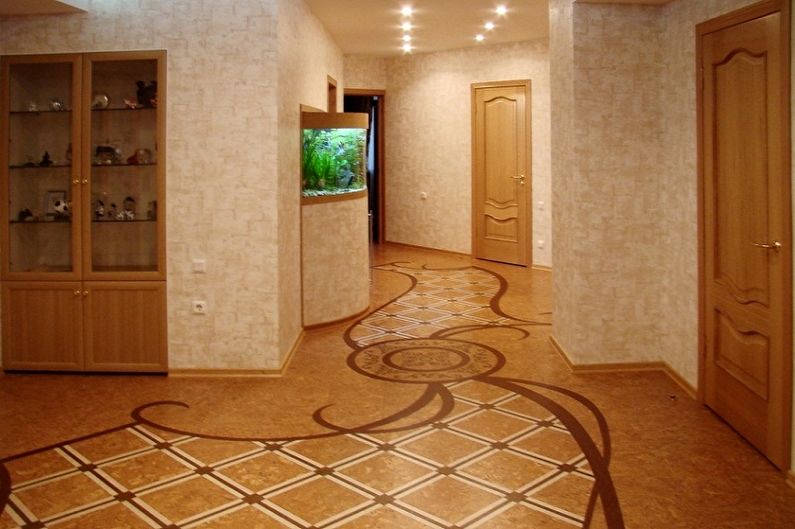
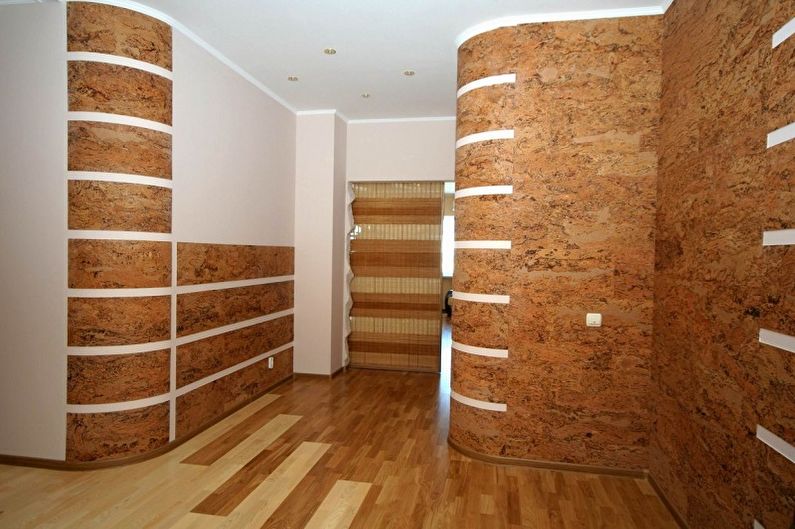
Cork floor in the bathroom
Glue plug in the bathroom - a very practical, warm and comfortable option for flooring. It is able to replace all kinds of rugs and heating, since it does not slip, it is warm to the touch (you can turn it barefoot) and, moreover, it has excellent moisture repellent properties. To prevent water from falling under such a floor, the base should be made of concrete with a polymer leveling fill, the glue should be of high quality, and the joints and joints should be completely airtight.

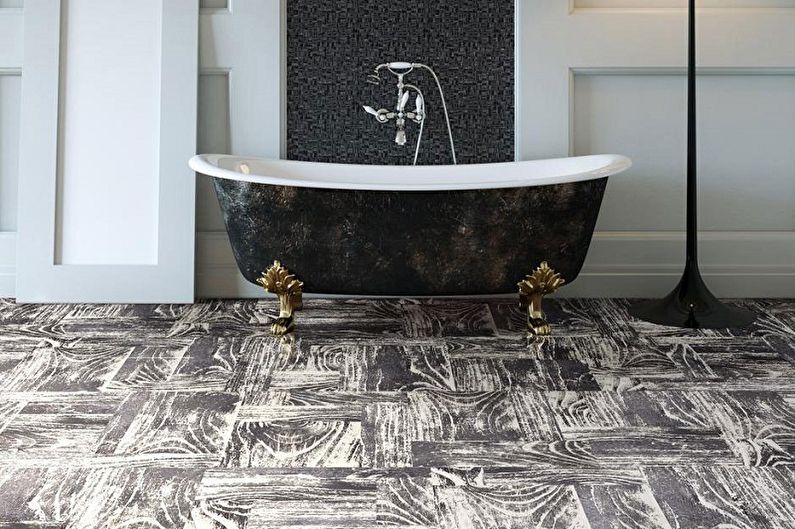
Cork flooring - photo
If you still doubt whether it is worth using a cork for finishing the floor in your apartment, house or office, look at the examples in the photo gallery on this page. Here is a large collection of options for using this material in different rooms and interior styles. The presented pictures will help determine whether the cork floor is suitable for one or another purpose and how well it will fit into a particular type of design.
